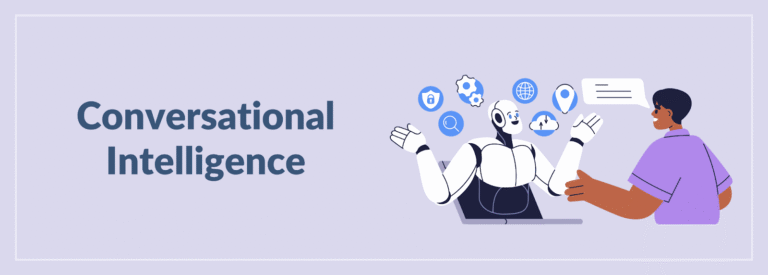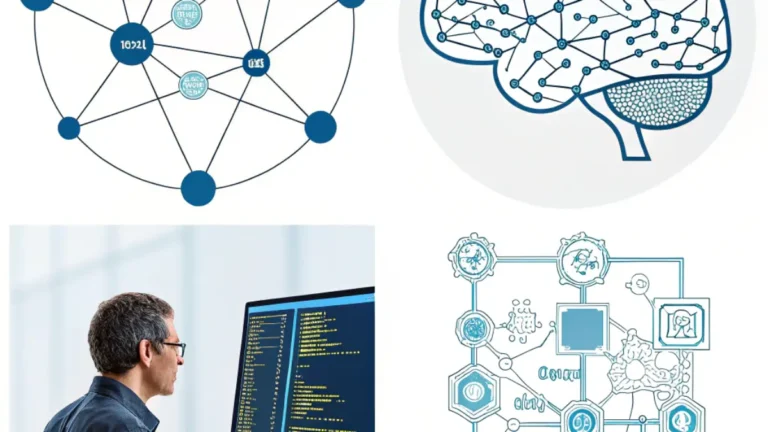
Introduction
Test AI is changing how software testing works. Traditional methods can struggle with scalability, maintenance, and updates. Test AI solves these problems by automating test case generation. It also predicts defects and improves test coverage.
AI in QA is not replacing human testers. It enhances their work. AI tools can analyze large amounts of data. They detect patterns and optimize testing. This lets teams focus on more complex tasks. As test AI grows, it plays a bigger role in software testing. This leads to faster and more reliable software delivery.
This article will discuss how test AI is transforming testing.
What is AI in testing?
AI in Testing and QA uses artificial intelligence to improve software testing. It helps automate tasks with machine learning, natural language processing, and data analytics. AI can analyze large amounts of test data. It finds patterns and predicts defects. AI selects and runs test cases by itself. This speeds up testing and improves defect detection. It reduces human effort and adapts to software changes. All of this leads to better software quality and more efficient testing.
Role of AI in Software Testing
AI is changing software testing. It automates tasks that were once done manually. This makes testing faster and more effective. Let us explore how AI is improving software testing.
AI-Powered Test Automation
Test automation has always been important. But AI takes it to a new level. Traditional tools follow fixed scripts. AI-powered tools use machine learning to adapt to software changes. They handle new features, UI changes, or evolving functions. These tools can automatically generate, run, and maintain tests. They learn from previous tests and adjust strategies. This reduces manual updates and increases test coverage.
Machine Learning for Test Case Generation
Creating test cases is time-consuming. But AI can help. Machine learning models analyze past test data. They also study user behavior. This helps AI identify areas with more defects. Testers can focus on these areas. AI can also generate test cases from natural language or specifications. It learns from large datasets to suggest test cases, including edge cases.
AI in Defect Prediction and Debugging
AI helps predict defects early. It analyzes past data, code changes, and bug patterns. AI tools can predict which parts of the code might fail. This lets teams focus on high-risk areas. AI also helps with debugging. It identifies the root causes of defects. This saves time compared to traditional debugging. AI can analyze logs and system behavior to find issues quickly.
Visual Testing and AI-Driven UI Testing
UI testing is another area where AI excels. Traditional UI testing relies on scripts to check elements like buttons or menus. AI can do visual testing by analyzing how the app looks during use. It detects issues like misalignments, broken links, or color problems. AI can also test across browsers and devices. This ensures the app works well on all platforms.
Test Data Generation and Management
Test data is important. AI can create test data that mimics real-world scenarios. It studies user behavior and past data. This data mirrors real-world scenarios. AI can also track which data sets have been used. It ensures that data stays consistent throughout testing.
Continuous Testing and Feedback Loops
Software is always changing. Continuous testing ensures updates don’t break the app. AI automates the testing process. It gives real-time feedback as developers push code. AI optimizes test execution and reduces redundant tests, making testing more streamlined.
Natural Language Processing for Test Case Understanding
NLP is a branch of AI that lets machines understand human language. In testing, NLP tools read and analyze test specifications written in natural language. These can then be turned into automated test cases. This approach helps non-technical stakeholders get involved. It also improves collaboration between business teams and QA testers.
AI in Load and Performance Testing
Load and performance testing ensures apps work well under heavy traffic. AI tools predict how the system will behave under different conditions. They analyze past performance data to help stress-test the app. This ensures the application performs as expected.
Use Case: AI in Software Quality Assurance
In a web app with frequent updates, regression testing ensures new changes don’t break existing features. AI improves this process by:
- Automating Test Execution: AI automates regression testing and selects the important test cases based on code changes.
- Selecting Relevant Tests: AI identifies which tests are impacted and runs only those.
- Predicting Defects: AI looks at past data to find high-risk areas and prioritize tests.
- Continuous Testing: AI runs tests during development and provides real-time feedback.
- Reporting: AI creates detailed reports to help QA teams make better decisions.
Outcome: AI speeds up testing, covers more areas, and reduces costs, making software development smoother.
Best AI Testing Tools
When testing software, you can choose from some of the best AI testing tools for 2025. These tools help ensure your software meets high-quality standards.
KaneAI
KaneAI by LambdaTest is an AI-native QA platform. It’s one of the best AI testing tools out there. Designed for fast-paced teams, it automates test case creation, management, and debugging.
With KaneAI, you can create complex test cases using natural language. This makes test automation easier and faster. The platform also optimizes test execution and improves data management. This leads to more precise and reliable software delivery.
Features:
- Test Creation: Create tests with natural language, making automation accessible to all.
- Intelligent Test Planner: Automates test steps based on high-level goals, making test creation simpler.
- Multi-Language Code Export: Convert tests into any programming language for flexible automation.
- 2-Way Test Editing: Syncs natural language edits with code for easy modifications.
- Integrated Collaboration: Tag KaneAI in Slack, Jira, or GitHub for better team collaboration.
- Smart Versioning Support: Tracks changes and keeps tests organized.
Testim.io
Testim.io is an AI testing tool that simplifies test automation. It lets testers create automated tests with little coding. Testim.io uses machine learning to adapt to updates, reducing maintenance work.
Features:
- Test Creation: Create tests with drag-and-drop. No coding required, speeding up the process.
- AI-Powered Test Authoring: AI helps build custom test steps, speeding up test creation.
- Smart Locators: Uses AI to develop locators that adapt as the app’s UI changes.
Functionize
Functionize is another top AI testing tool. It simplifies testing for complex applications. Functionize uses deep learning AI to automatically create and run tests, ensuring functional and end-to-end coverage.
Features:
- Scalable Test Cloud: AI improves resource allocation for efficient tests.
- AI-Powered Test Maintenance: Detects changes in the app and updates tests automatically.
- Smart Data Generation: AI generates realistic test data for more reliable scenarios.
- AI Visual Testing: Uses computer vision to compare full-page screenshots or elements.
Challenges in AI-Powered Testing
Here are the key obstacles
- Data Dependency and Model Training
AI needs a lot of quality data. Without it, models struggle to make accurate predictions. Gathering and preparing data takes time and costs money.
- Integration with Existing QA Frameworks
Adding AI to older systems can cause disruption. It’s important to ensure AI tools work well with other software like CI/CD and defect tracking.
- Resource and Skill Requirements
AI tools need specialized skills. Teams may not have the expertise to operate and maintain them. Extra resources may also be needed.
- False Positives and Model Accuracy
AI tools can create false positives. These need attention to avoid wasting time. Constant tuning is needed to maintain accuracy.
- Evolving Software and Changing Requirements
Software often changes. AI tools must keep up. Manual changes to tests may still be required.
Best Practices for Implementing AI in QA
Below are some key practices to consider:
- Start Small and Scale Gradually
Begin with a small project. Test AI’s effectiveness. Identify challenges early. Once successful, expand to more complex tasks.
- Invest in Quality Data
AI needs quality data. Make sure the data is accurate and comprehensive. Keep it updated to stay relevant.
- Choose the Right AI Tools
Pick AI tools that match your needs. Ensure they fit with your systems. Choose tools that adapt to future changes.
- Train Your Team
Train your team on using AI tools. Help them understand AI algorithms. Teach them to improve accuracy by fine-tuning the models.
- Focus on CI and Continuous Testing
Integrate AI tools into your CI/CD pipeline. It allows for continuous testing. This provides real-time feedback and quick bug detection.
- Ensure Model Transparency
Choose AI tools with clear explanations. Transparency builds trust. It helps testers understand results and make adjustments.
- Monitor and Fine-Tune AI Models
Continuously monitor the AI models. Fine-tune them based on real-world data. Keep improving accuracy.
- Prioritize Test Cases Based on Risk
Let AI prioritize the high-risk test cases. This improves coverage. It reduces the chances of missing defects.
- Leverage AI for Predictive Analytics
Use AI to predict defects based on past data. It helps identify vulnerable areas. This reduces time spent on manual detection.
- Maintain Human Oversight
AI helps but doesn’t replace testers. Regularly review AI results. Ensure they meet business needs.
The Future of AI in Software Testing
As AI improves, it will fit more easily into QA processes. Key improvements will focus on detecting defects, automating tests, and predicting issues. AI will also help with continuous integration. It will give real-time feedback and prioritize tests better.
AI tools for developers will become easier to use. They will learn from past data and user behavior. This will help spot problems early and lower risks. It will also improve the software development process.
Challenges, like data quality and model understanding, still need attention. AI will need to work alongside human testers to keep up with software changes.
Conclusion
AI will transform software testing by enhancing its speed and intelligence. The advantages are evident, despite certain obstacles persisting. As AI advances, it will take on a larger role in QA improving the effectiveness of testing.
For companies, employing AI-driven tools has become essential. Companies can deliver superior software by adhering to best practices and collaborating with human testers. The future of AI in testing looks bright, and users will remain at the forefront.






